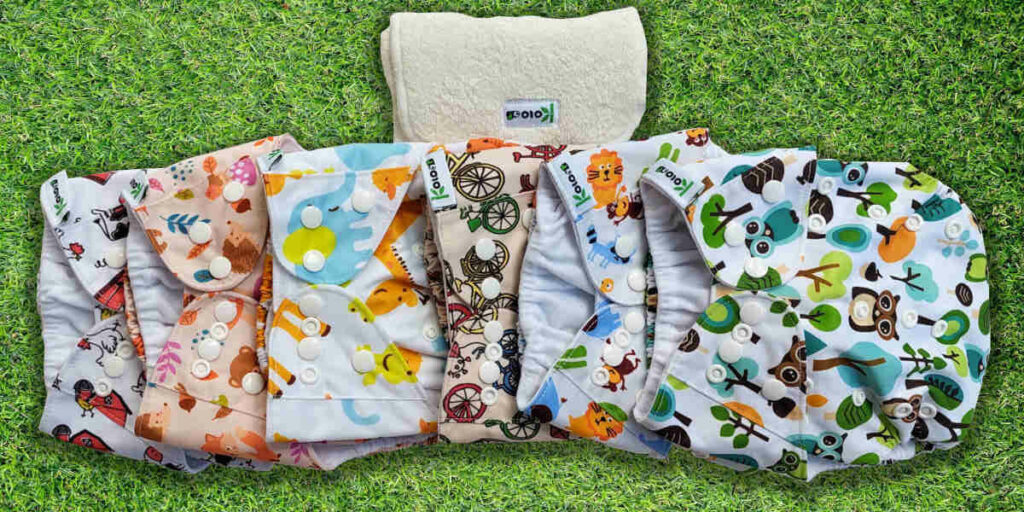Reusable nappies are an eco-friendly and convenient alternative to disposable nappies. They can be reused several times after being washed and are made of natural materials without chemicals.
We at Kolo want to provide you with a comprehensive guide revealing everything you need to know: how to use reusable nappies, how to use them and how to clean them properly, and much more.
What are reusable nappies?
Reusable nappies are a type of cloth nappy that, unlike traditional disposables, can be washed and reused many times, making them a sustainable and economical choice.
What are the advantages and disadvantages
Reusable nappies have several advantages over disposable nappies. They are more environmentally friendly, as they reduce the amount of waste produced, and they can be cheaper in the long run, as there is no need to constantly buy new ones. They are also much gentler on the baby’s skin as they are made from natural materials and without harmful substances.
The only disadvantage, if we can speak of a disadvantage, is the need to wash them, which translates into a few extra washing machines per week and a few extra cleaning and sanitising steps.
How to use reusable nappies?
There are many different types of washable nappies, each model has its own characteristics and there are different types that are used in exactly the same way as a disposable nappy. The difference, however, is in the materials: while the disposable nappy is made of plastic materials designed, the washable nappy is made of fabrics that can be machine washed and reused.
Once the faeces have been disposed of, the washable nappy is placed in a container to await washing, and once washed, the nappy can either be hung out to dry or put in the dryer for re-use. Washable nappies, if of quality like Kolo products, can be used on more than one child, lowering their initial cost even further.
The most popular types
Usually, washable nappies consist of an absorbent inner part and a waterproof outer cover; the inner part can be made of various materials, such as cotton or fleece, and thanks to the elastic bands around the baby’s thighs, it prevents faeces and urine from leaking out.
The most commonly used types of nappies are:
- All in one (AIO) which means ‘All in one’ as it is made of one ‘piece’. The inserts are attached to the outer shell. In some models the seams are designed so that the inserts can be slightly separated to allow faster drying.
- Pocket. Nappies of this type consist of an inner pocket (usually made of microfleece, more rarely of cotton) into which one or more absorbent inserts are inserted. The outside of the nappy is made of PUL, a waterproof and breathable material. The latter type is the most widespread and used by mothers.
How to keep them clean and hygienic
Washing washable nappies properly is the best way to keep them absorbent and long-lasting. Once you have purchased your nappies, you will need to proceed with stripping, a cycle of three washes that aims to remove industrial processing residues from the nappies and inserts. But that is not all it does: it allows the inserts to reach their maximum absorbency. New absorbent inserts need several washes before they reach their full absorbency (a bit like a new towel) and stripping speeds this up.
Rinse immediately after use to remove solid waste. If the nappy has just been used it may be sufficient to rinse it under the warm running water of the sink or bath tub, if it needs to be cleaned more thoroughly it may be useful to use a jet of water at moderate pressure to remove most of the waste.
After removing the solid waste, it can be soaked in cold water for a few minutes, possibly with the addition of baking soda to help pre-treat any stains and prevent them from setting. Pay attention to the type of detergent too: choose a green one, it will be effective but gentle on your baby’s skin and above all will enhance the benefits of your green choice. We strongly recommend the powder formula: our research has shown that it is the best formulation, both for its mechanical action on the fabrics and for the greater solubility of the treating agents.
It is absolutely forbidden to use fabric softener

